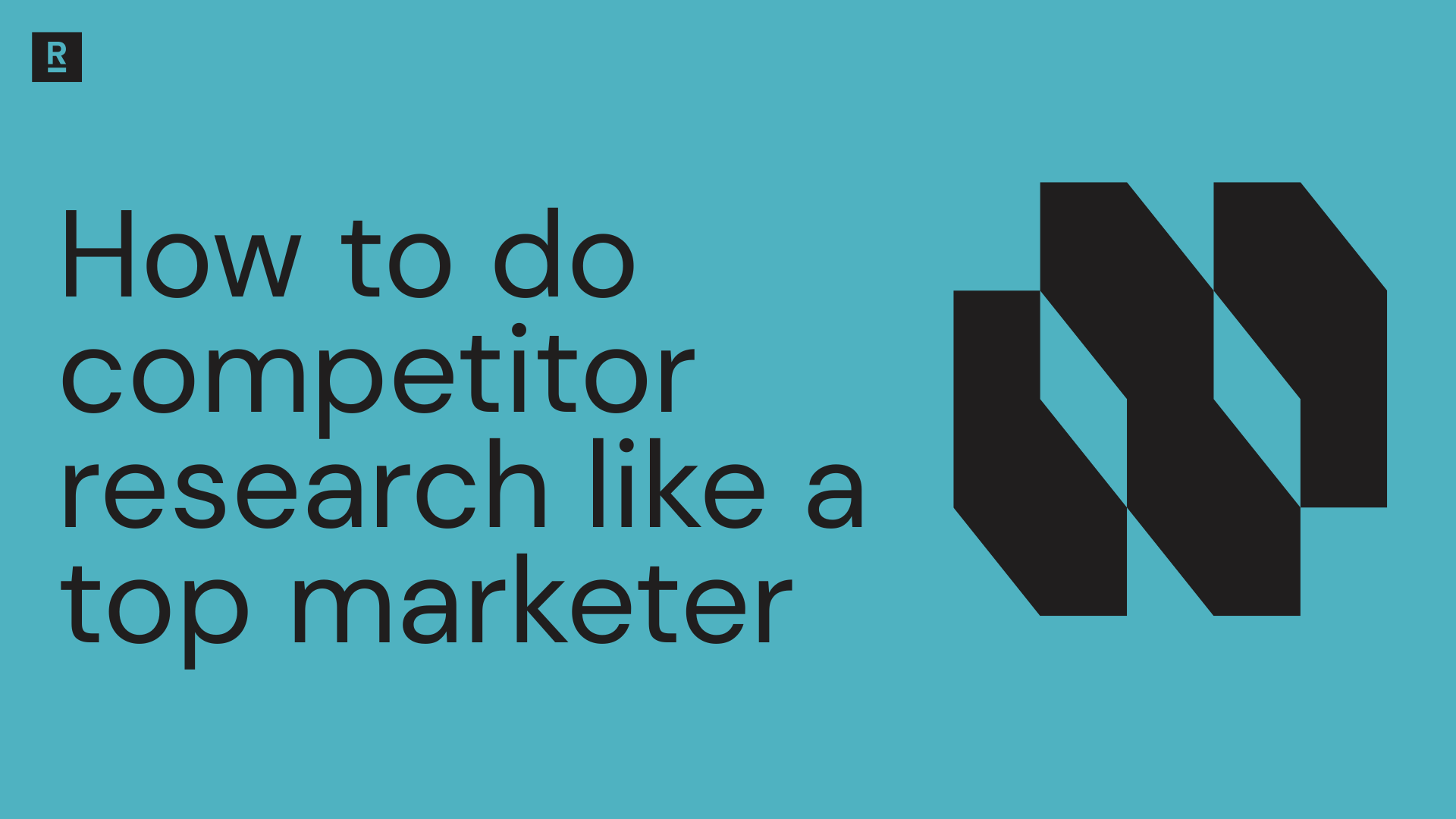If you are in business, you will have competitors for sure. In today’s world, no business idea can run on a monopoly track. Even if your product or idea is among the most unique in the world, you will still have to deal with competitors in some form or the other.
Identifying who your competitors are and knowing what they are doing to keep their business on the right track is crucial for your business. It is equally important to know what strategies they are using at present and what business tactics they are likely to employ in the future to keep pace with the ever-changing market landscape and dynamics.
“Keeping track of who your competitors are, what people are saying about them, and what they are saying themselves can help you differentiate your business and stay ahead of trends that could impact your business,” says Michele Levy, an independent brand strategy consultant
Ask any business consultant and they will rank competitive analysis as one of the key activities that any business must perform relentlessly. Given the easy availability of sophisticated business tools and data assimilation processes through Artificial Intelligence, competitive analysis is no longer as complicated and time-consuming as it was in the past.
What our client team is seeing today – December, 2025
From our experiences, this is what we are seeing: the teams that win treat competitive research as an operating system, not a one-off project. The most effective pattern we see is one structured deep-dive competitive analysis per quarter, supported by lighter weekly monitoring of 5–10 priority competitors’ search visibility, content, and PR activity. That cadence lines up with what dedicated competitive-intelligence firms recommend (quarterly as a minimum, monthly as ideal in fast-moving markets).
We’re also seeing a clear shift from “who sells what we sell?” to “who owns attention where our buyer is?” In practice, that means looking beyond direct product competitors to include content competitors in the SERPs, social competitors in your category conversations, and PR competitors who dominate media share of voice—even when their offering is adjacent rather than identical. This expanded lens mirrors how modern frameworks define competitive analysis: a comparison of market position, messaging, pricing, and customer perception across both direct and indirect players.
Another consistent pattern: the highest-performing teams are using AI and automation to collect and summarize signals, but not to replace human judgment. We see AI doing the heavy lifting on monitoring (alerts for keyword wins/losses, new backlinks, messaging shifts, and media hits), while strategists still synthesize that data into positioning, roadmap, and campaign decisions. That’s aligned with broader marketing research showing that competitive and market research is one of the top use cases where marketers say AI is already helping them most.
Our clearest takeaway: in 2025, a “healthy” competitive research habit is
- (1) always-on lightweight monitoring,
- (2) quarterly structured analysis tied to real decisions—like pricing, roadmap, or GTM priorities—and
- (3) a deliberate focus on both business competitors and content/attention competitors across search, social, and media.
What top marketings experts are saying today
Several respected voices in marketing and competitive intelligence echo the idea that competitive analysis has to be ongoing, structured, and action-oriented. In Inc., Michele Levy, an independent brand strategy consultant, emphasizes that “keeping track of who your competitors are, what people are saying about them, and what they are saying themselves” helps you differentiate your brand and stay ahead of trends that could impact your business. In the same piece, she stresses that “everyone really needs to do competitive research” and that the main difference between companies is the scale at which they do it.
The Inc. guide also frames competitive assessment as “an ongoing process” where you continuously deepen your understanding of competitors’ strengths and weaknesses and formalize that into a repeatable research framework—rather than treating it as an ad-hoc Google session. That perspective is reinforced by Ken Garrison, former CEO of the Society of Competitive Intelligence Professionals, who argues that systematic competitive research is what allows businesses to turn raw observations into actionable strategy and “actionable intelligence,” instead of disconnected facts.
More recent marketing leaders echo the same themes. HubSpot’s competitive analysis guide calls competitive analysis “a critical component of any business strategy” and notes that “a competitive analysis report is the key to understanding your brand’s position in the market,” mapping both your competitors’ and your own strengths, weaknesses, and growth opportunities.
Michael Brenner at Marketing Insider Group describes competitive analysis as “a powerful tool for understanding how you compare to competitors and creating smart strategies to get noticed by consumers,” citing research that roughly three-quarters of companies now conduct a competitive analysis at least once per year and more than a third do it every month.That aligns with Proactive Worldwide’s recommendation that “performing a current competitive analysis is highly recommended on a quarterly basis — and on a monthly basis for ideal results,” especially in markets where conditions change quickly.
Across these expert perspectives, there’s strong consensus on three points:
- (1) competitive research should be continuous rather than one-and-done,
- (2) it should be structured so that insights turn into concrete strategic decisions, and
- (3) it must look beyond basic product comparisons to include messaging, customer feedback, and broader market trends.
How to do competitive analysis like a top marketer
You probably do some flavor of competitive analysis already: spot-checking pricing pages, lurking in ad libraries, lurking on LinkedIn to see what competitors are launching. The problem is that most of that work dies in a slide, never affects CAC, and definitely does not change roadmap. Top marketers treat competitive analysis as a living decision system, not a research project. In a world of noisy channels, rising acquisition costs, and attribution gaps, you cannot afford pretty charts that do not change behavior. Here is how to build a competitive analysis that your CEO and sales team actually use.
1. Start with the decision, not the spreadsheet
Before you open a single tab, decide what this analysis needs to change. Are you trying to reposition your category narrative, find cheaper acquisition angles, strengthen retention, or win specific enterprise deals against a named competitor set. Top marketers write a one page brief that defines decisions, time frame, and who will use the output. That clarity dictates what data you collect, which benchmarks matter, and how deep you go. Without it, you end up with 60 tabs and zero impact on CAC, LTV, or roadmap.
2. Define a tight, useful competitor set
A great competitive analysis does not include everyone your founder is anxious about. It includes the companies that actually influence your buyers. Start with 3 to 5 direct competitors that show up in sales calls, comparison searches, and RFPs, then layer in 2 to 3 indirect competitors or substitutes, such as internal tools, agencies, or spreadsheets. When Peep Laja advises teams on positioning, he pushes them to focus on who they need to beat in the buyer’s mind, not in a generic market map. Your goal is a set that reflects how real buyers shortlist, not how analysts categorize.
3. Build a simple data model before you collect anything
Most competitive analyses fall apart because every marketer collects a slightly different set of screenshots, notes, and gut feelings. High performing teams create a simple schema before they research so they can compare apples to apples. For a growth focused view, you might track:
-
Target segments and ICP
-
Core promise and positioning
-
Pricing and packaging
-
Channels, offers, and funnels
A B2B SaaS team I worked with used a shared Airtable schema like this and cut their “competitive mystery” time in half. More importantly, it gave sales and product a shared lens for what “winning” looked like across competitors.
4. Reverse engineer their positioning, not just their features
Copying competitor feature lists is easy and mostly useless. What matters is the story they are telling the market and which pain they choose to own. Read their homepage, product pages, onboarding flows, and sales decks as if you were the ICP. What jobs do they emphasize. What outcomes do they promise. Who do they subtly tell to self select out. When April Dunford talks about positioning, she frames it as helping the right people get “this is obviously for me.” That is what you are decoding. Once you articulate each competitor’s narrative in a short paragraph, you can see where the white space is for your own story.
5. Deconstruct their acquisition and funnel mechanics
This is where competitive analysis becomes actionable for performance marketers. Use tools like Meta Ad Library, Google Ads Transparency Center, Similarweb, or SEMrush to understand which channels competitors lean on, what offers they push, and how aggressively they bid on category and branded terms. Click through their funnels as a real prospect: what happens after the ad, what value is promised, how many steps to a lead or purchase, where do they use urgency, social proof, or calculators. One ecommerce brand we benchmarked realized that a key competitor pushed almost every cold prospect to a quiz with a 20 percent welcome incentive, which dropped their own list building CAC by 22 percent when replicated thoughtfully.
6. Translate noisy signals into a clear opportunity map
By now you will have more screenshots, notes, and hunches than any busy marketer needs. The next step is to compress it into a simple view of where competitors are strong, weak, and over-invested. Top teams use a lightweight model like this:
Competitive intensity radar (score 1 to 5 on each)
- Brand differentiation
- Offer strength
- Channel saturation
- Buying committee lock in
When Brian Balfour’s growth teams talk about finding “unfair advantages,” this is what they mean in practice. You are looking for places where your differentiation, cost structure, or product all let you zig while others zag. Maybe everyone is racing to discount on Meta, but nobody is owning high intent partnership channels or retention loops.
7. Operationalize it so it actually changes behavior
A competitive analysis that lives in a folder is just expensive therapy. The goal is to wire it into your daily execution. Build a simple enablement deck for sales that shows how to handle the top three competitors with clear talk tracks. Turn acquisition insights into specific experiments in your testing roadmap, such as new offer structures, creative angles, or landing page variants. Share a one page narrative with product leadership so roadmap decisions are grounded in the real market, not anecdotes. One B2B team used this approach to ship a “land and expand” packaging update that increased expansion revenue by 15 percent in two quarters because everyone understood how competitors monetized accounts.
8. Make it a living system, not a quarterly event
Top marketers do not treat competitive analysis as something you do before a board meeting. They bake it into weekly habits. That might look like a 30 minute “competitor corner” in growth standups, a shared Slack channel where new ads, launches, and pricing changes are dropped, or a quarterly refresh of the core analysis for the next planning cycle. The point is not to react to every move. It is to maintain a current, reality based map of the terrain so budget decisions, creative bets, and retention plays stay grounded in how the market is actually shifting.
Key benefits of competitive analysis

It helps you understand the market better.
Competitive research can help your organization get an accurate idea of the trends happening in the marketplace that you could have possibly missed otherwise. The ability to identify trends and predict future movements can be a huge asset for any business.
It enhances the content marketing process.
When you introduce a product or service in the market, your customers are concerned with one key aspect – how it is going to make their life better. If they choose to buy a competitor’s brand, it obviously means that they are doing a better job of highlighting the benefits and adding value to their product/service. Competitive research can help you understand customer behaviour better and provide a closer view of your competitors’ strategies. You can tweak your approach accordingly and win over your lost customers and add newer ones.
It helps your team discover gaps
Competitive research data can help you identify the gaps in the market, such as some potential places that no competitor has cared to serve as yet. You can cash in on the opportunity, fill the gaps, and thus explore a new market for your brand.
It creates a plan for your business
When you get detailed data about competitor activities and market performance and trends, you will be able to create a powerful strategy that can serve as a roadmap for the future.
Should you hire a consultant for competitive analysis?

- They bring to the task their unique expertise in information gathering.
- They will have access to tools and technologies you never knew existed.
- With hundreds of such analyses under their belt, they know how to get it right in a systematic manner.
The probable downside of hiring an external consultant is that there could be compliance issues with senior managers. Articulating what you want to know might be difficult at times as there will be a vast difference in the approaches of your in-house experts and a professional researcher.
Should you do competitive analysis in-house?

- Since you would understand your business better and inside-out, you will know the competitive factors that require close tracking.
- You have access to a constant stream of data in real-time and the authority and convenience to generate more if needed.
- The managers are likelier to accept suggestions and recommendations from an insider than an outsider.
The downside is that doing serious research and data gathering and crunching about competitive intelligence is a specialized field. It could take months (or probably more) for you to develop an in-house team that’s as good as a consultant who specializes in this field.
Some organizations take the middle road approach by hiring the services of a consultant to initiate the project and provide updates on a quarterly basis while the in-house team handles the day-to-day tracking part.
Whatever option you exercise for your competitive analysis needs, you will have to follow a specific process involving definite steps. These are:
- Identifying your competitors
- Categorizing them
- Doing a detailed analysis of their systems and processes
- Knowing their strategies, such as market positioning and others
- Looking at their pricing policies and shipping plans
- Analyzing independent customer reviews
- Looking at their social media presence and reputation
Identifying Your Competitors
As mentioned earlier, every business has a competitor, or, in most cases, multiple competitors fighting to grab a larger share of the same market. There are many ways of identifying your top competitors. You will be able to identify your local competitors quickly, but in today’s global marketplace, you will be up against hundreds of businesses that are selling the same products and services that you are offering.
A simple online search will help you get the names of the leaders and other key players vying for the same set of audience and buyers. It is a good idea to look for the digital footprints of your competitors by analyzing the social media space, online news websites, threads and review sites, online communities, and other similar places. Cast as wide a net as possible to get the names of as many competitors as possible so that your counter-strategy can be crafted based on more extensive data.
Unveil your competitors’ marketing secrets. Just enter their website and get a customized report from SEMrush. It’s free.
Categorizing Your Competitors
When you are done with collecting names and details of a large number of competitors, the next step is to categorize them. While some of them will be in direct competition with you, others might be competing with you in an indirect manner. Categorizing your competitors will help you create a focused strategy.
The main competitors are those who are in direct competition with you, with the same or similar line of products/services and targeting the same audience/market. The other competitors could include a wider field offering a different version of products or ancillary products/services aimed at a different set of audience altogether.
Analyzing Their Systems And Processes
This step includes having a closer look at their website details, such as the manner in which they have displayed their products, product descriptions, photographs, call-to-action methods, social media positioning, and blogging strategies. The analysis can also include a close look at other commonly employed strategies, such as website optimization for mobile phones, customer support systems, approach to the display of marketing banners, brand promotion methods and frequency, etc.
Understanding Market Positioning Plans
Identifying the competitors’ market position plans can not only provide input on their tactics but can also help in their proper categorization. You will be able to know how they are positioning their products/services differently and benefitting from the strategy. Are they successful in sending home the message that they are unique? Are the customers buying this argument? The answers will help you unravel the secrets to market positioning and provide the ideas to position your brand in the best possible manner to maximize sales and profits.
Understanding The Pricing And Shipping Moves
Your brand may have great value in terms of quality and performance but if the pricing is not right, you may face a tough time in a competitive market. Knowing how your competitors are pricing a similar product can help you understand how to get your pricing right and get the consumers on your side. It is important to mention here that selling your product at a lower price than your competition does not guarantee better sales. Your buyers are looking for specific features and benefits in a product. If you provide these and more, they will be more than willing to shell out a few more dollars.
Shipping strategies also play a key role in the success of a brand. Do you know what kind of shipping policy your competitors are using? A logical shipping price can do wonders for your online sales while minimizing cart abandonment episodes. Yes, shipping costs often force customers to let go of a brand at the last point of sale. Peek into the shipping pricing plans offered by your competition and create one that can steal a march on them. Companies are using ideas such as giveaways, loyalty programs, gift cards, hefty discounts, and free exchange for an extended period to win over customers.
Analyzing Independent Customer Reviews
Are customers happy with the other brands? Independent reviews by customers about the products and services of your competitors can provide you with an accurate view of how their brands are doing. Have a look at all the places where customers are likely to post impartial reviews. These include social media channels, blog sites, online review sites, and others. Based on the downsides pointed put by customers, you can attempt to fill in the gaps and try and convert them to your brand.
If many reviews point at a high level of dissatisfaction with the competitor brand, you can move in quickly to provide the alternative they are looking for. Look for the reasons why customers are unhappy with the competitor’s brand. Is it about quality, performance, packaging, pricing, delivery, post-sales issues, or something else? You can try and get those buyers to move away from that brand and go for yours by promising to deliver an enhanced buying experience and a better product.
Looking At Their Social Media Presence And Reputation
With companies having a growing presence on social media channels such as Facebook, Twitter, and Instagram, businesses are looking for every possible chance to outshine their competitors on leading platforms. To achieve this, they need to look at the competitors’ activities on these channels and take appropriate actions.
Do your competitors have a large following on these platforms? Do they have a positive view of critical areas of their business such as support, pricing, quality, and information-sharing?
The upside is that if a competitor is doing well on social media, you too can take advantage of the positive response of the customers for the niche you are targeting. You can identify the areas they are doing well in and put more effort into improving your efficiency in those areas. This can be done by having a relook at your existing strategies or choosing a different approach altogether to achieve your expected goals.
Here Are A Few Things You Should Be Focusing On:
- Overall Social Media Plan and Presence
- The SM channels they have a presence on
- Their interaction with the client base
- The frequency with which they post content on these channels
- The kind of content they are posting
- The areas of business they are highlighting
Your competitive analysis cannot be complete without a SWOT Analysis. Unless you have a closer view of the strengths, weaknesses, opportunities, and threats of your competitors, you cannot craft the right strategies to steer ahead of them.
Your SWOT Analysis Must Include The Following:

- The activities of your competitors in the areas of content marketing, social media marketing, product promotion, etc.
- The key areas where your competitor is having a lead on your brand
- The weak links of your competitor’s marketing strategy
- The areas where your brand has some advantages over your competitor
- The possible areas where they can do better than what they are doing now
- The opportunities in the market that your competitor has identified and you have missed
By doing this, you can ensure a better position for your company/brand. It will also help you in identifying and exploring areas for improvement of your business.
You must establish a point of reference before you start the exercise of competitive analysis. The data and other information assimilated through the process can be analyzed by marketing experts and a powerful strategy can be chalked out based on the input received from various stages of the competitive analysis.
How we wrote this article
As a growth marketing, SEO, and PR agency, we spend a big chunk of our time inside clients’ data and their competitors’ ecosystems—running SEO gap analyses, message and positioning reviews, PR landscape audits, and social/content benchmarking across B2B SaaS, eCommerce, and professional services brands. This article is built from those day-to-day engagements: the questions founders, CMOs, and marketing leaders repeatedly bring us when they’re trying to understand “what the competition is really doing” and how to respond.
For this piece specifically, our research team combined that first-hand experience with a structured review of current best practices from leading marketing and competitive-intelligence sources. We examined recent frameworks and definitions from HubSpot’s competitive analysis guide, Marketing Insider Group’s playbook, and other practitioner-led resources that focus on how to turn competitor data into actionable strategy rather than just dashboards.
We also looked at how specialist competitive-intelligence firms and consultants talk about cadence and depth of analysis today. That included guidance from Proactive Worldwide on recommended quarterly and even monthly competitive reviews, along with newer takes on continuous monitoring from other competitive-intel providers.
Finally, we validated the “why this matters” section by revisiting long-standing voices in the space—like Michele Levy’s guidance in Inc. on staying “smart on the competitive landscape” and using competitive research to inform product, pricing, and messaging decisions. Put simply: this article reflects both what we do for clients week in and week out and what the broader expert community currently recommend







